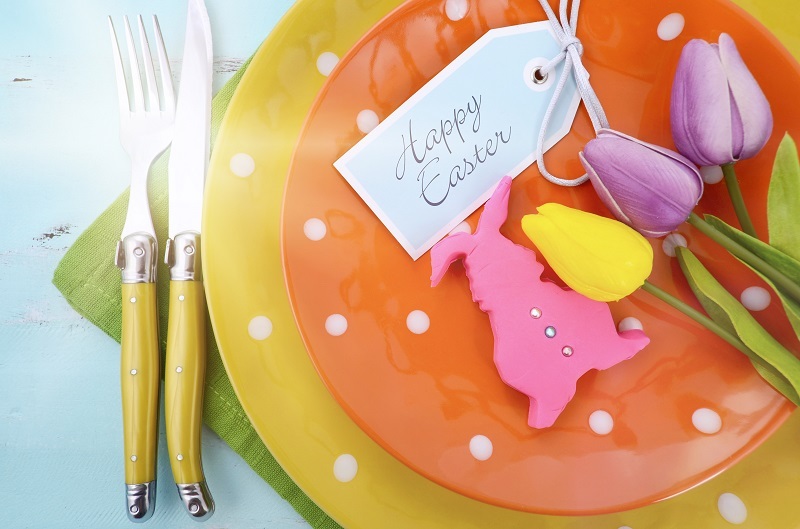Learn how to preserve your flowers with three simple steps
Posted on 13/08/2025
Learn How to Preserve Your Flowers with Three Simple Steps
Flowers are a wonderful way to mark a special occasion, add decorative flair to your home, or simply brighten your day. But their beauty is often fleeting, leaving you wishing you could make their loveliness last longer. If you've ever wondered how to preserve your flowers effectively and easily, you're in the right place. In this comprehensive guide, we'll show you how to preserve your bouquet or single stems using three straightforward steps that anyone can follow at home. Whether you want to keep a wedding bouquet, save flowers from a special event, or just experiment with floral crafts, these techniques will help you cherish your blooms for months, even years to come.

Why Learn Flower Preservation?
Preserving flowers allows you to capture memories and enjoy your favorite blooms long after they've been cut. Common reasons for flower preservation include:
- Saving meaningful bouquets from weddings, anniversaries, and celebrations.
- Creating homemade gifts or decorative keepsakes for friends and family.
- Reducing waste by giving flowers a second life instead of discarding them.
- Using preserved flowers in crafts, resin art, greeting cards, or home decor.
With so many versatile uses, it's no wonder that countless people want to preserve flowers at home. Let's explore the three simple steps that make flower preservation easy even for beginners.
Step One: Select and Prepare Your Flowers
1.1. Choose the Right Flowers for Preservation
The first step in learning how to preserve your favorite flowers is selection. Not all blooms are created equal when it comes to preservation. Some flowers retain their color and shape better than others.
- Best candidates: Roses, hydrangeas, lavender, chrysanthemums, daisies, baby's breath, and carnations.
- Flowers to avoid: Succulents and water-heavy flowers such as tulips, lilies, or peonies can be tricky to preserve without professional techniques.
Tip: Choose flowers that are freshly bloomed and at their peak. Wilted, bruised, or damaged petals will not preserve well and will likely deteriorate further during the process.
1.2. Prepare Your Flowers Properly
Before starting the preservation process, it's crucial to properly prepare your blooms:
- Remove excess foliage and any leaves that could hold extra moisture or mold.
- Gently shake off any water droplets. Ensure flowers are completely dry before proceeding.
- Trim the stems to your desired length using clean, sharp scissors or garden shears.
Now that your flowers have been selected and prepped, you're ready to move on to the preservation method of your choice.
Step Two: Select Your Preservation Method
There are several popular ways to preserve flowers at home, each with its own advantages. Below, we'll cover three of the most effective and simple methods.
2.1. Air Drying Flowers
Air drying is one of the oldest and simplest flower preservation techniques, particularly effective for hearty flowers like roses, lavender, and hydrangeas.
- Gather small bouquets (no more than six stems per bundle) and tie the ends tightly with string, rubber bands, or floral tape.
- Hang the bundles upside down in a dry, dark, and well-ventilated area. This protects colors from fading and prevents mildewing.
- Leave flowers for two to four weeks, or until they feel crisp and papery to the touch.
Expert tip: To preserve color and deter pests, spritz the dried flowers with hairspray or a gentle floral fixative once fully dry.
2.2. Pressing Flowers
Flower pressing is ideal for blooms you want to frame, use in scrapbooks, or encase in resin or jewelry. It's popular for flat, delicate flowers like pansies, daisies, and violets.
- Arrange flowers between parchment paper or directly inside a thick, heavy book. Ensure petals don't overlap for the best results.
- Close the book and weigh it down with additional books or heavy objects.
- After two to three weeks, carefully check the flowers. They should be dry, flat, and ready to use.
Pro Tip: For speedier results, use a flower press, which evenly compresses and dries flowers in a matter of days.
2.3. Using Silica Gel to Preserve Flowers
Silica gel preservation is the top choice for flowers with complex shapes or many delicate petals, such as roses, peonies, and orchids. Silica gel absorbs moisture quickly, preserving blossoms' original form and vibrant color.
- Fill an airtight container with one inch of silica gel crystals (available at craft stores or online).
- Place flowers face up, gently nestling them into the gel.
- Pour more crystals over the top so the blooms are fully covered.
- Seal the container tightly and store in a cool, dry place.
- After one to two weeks, carefully remove the flowers, brushing away excess gel with a soft paintbrush.
Silica gel allows you to preserve flowers that look almost as fresh as the day you picked them, making it an excellent alternative to expensive professional services.
Step Three: Display and Care for Your Preserved Flowers
3.1. Creative Display Ideas
The final step in preserving your flowers is to showcase your handwork in an attractive, lasting way. Here are some options for displaying preserved blooms:
- Frame pressed flowers under glass for a beautiful wall art display.
- Arrange dried bouquets in vintage vases, mason jars, or shadow boxes.
- Add preserved blooms to candles, jewelry, or decorative trays made with resin.
- Place single pressed flowers in greeting cards, bookmarks, or journals as a personalized touch.
3.2. Caring for Preserved Flowers
Proper care ensures that your preserved flowers stay beautiful for as long as possible. Follow these essential tips:
- Keep out of direct sunlight to prevent colors from fading.
- Dust regularly with a soft makeup brush or a hair dryer on cool, low settings.
- Store in a dry environment to avoid mildew and moisture damage.
- Handle gently as preserved flowers and petals can be delicate and brittle.
With the right display and care, your preserved flowers can remain beautiful memories for years.
Bonus Tips to Master Flower Preservation
- Combine methods: Some flowers preserve best when using both pressing and air drying for different parts (e.g., petals pressed, stems air dried).
- Use desiccants like silica gel more than once, as it can be dried in the oven and reused for future projects.
- Experiment with bouquets and single stems to see what works best for your preferences and home decor.
- Try adding scents, like a drop of essential oil, to dried arrangements for an extra-special touch.
- Document your process in a photo diary or journal to track which flowers and techniques create the results you love most.

Frequently Asked Questions about Flower Preservation
Q1: How can I keep my dried flowers from becoming brittle?
To help your preserved flowers remain supple, avoid humidity and handle them gently. Misting with a light, floral-safe spray (such as hairspray) can help reinforce petals.
Q2: Can I preserve flowers that are already wilting?
Wilted flowers can sometimes be revived by trimming the stems and soaking them in fresh water before beginning the preservation process. However, the final results may not be as vibrant as with fresh blooms.
Q3: Do preserved flowers last forever?
While dried and preserved flowers can last for several years with proper handling, they will eventually show signs of fading or fragility. Keeping them away from moisture and sunlight will help extend their beauty.
Q4: Are there any flowers that cannot be preserved?
Very delicate, water-rich, or succulent flowers (like tulips, calla lilies, or succulents) are difficult to preserve without specialized equipment. For these, consider using a high-quality photograph instead.
Q5: What about using resin to preserve flowers?
Encasing flowers in resin is a trendy way to preserve their color and form. Dry the flowers first using one of the above methods, then follow resin casting directions for safe encapsulation.
Summary: Preserve Your Precious Flowers in Three Easy Steps
Learning how to preserve your flowers doesn't have to be daunting or complicated. By following these three simple steps--selecting and preparing your flowers, choosing your preservation method, and displaying and caring for your preserved bouquet--you can enjoy the beauty and memories of your favorite blooms for a long time.
Try these techniques with your next bouquet and see how easy it is to transform fresh flowers into lasting keepsakes. Not only will you reduce waste, but you'll also create beautiful home decor, heartfelt gifts, or personalized art that cherishes every special moment.
- Ready to get started? Gather your next bouquet and preserve your flower memories in three simple steps today!
For more tips on flower preservation, creative DIY projects, and home gardening, keep browsing our site for expert advice that helps you bloom year-round.
Latest Posts
Unveil the blossom that reflects your personality
Learn how to preserve your flowers with three simple steps
Master the Art of Hydrangea Care for Stunning Results
Effortless Greenery: Explore the Top 10 Office Plants for Busy Professionals





